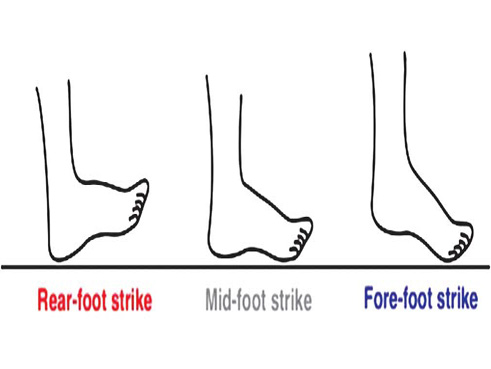No pain no gain would only get you so far but don’t push your limits for that can cause some irreparable damage to your body. Shin splints or medial tibial stress syndrome commonly occurs when you overuse the lower muscles, tendons or shinbone of the legs. It can be pretty pain painful and bring your running to a complete standstill if left unchecked for long. Splint shins are something nobody would like to deal with. Mentioned below are a few effective remedies to get rid of shin splint injuries and faster recovery tips:
What Exactly Are Shin Splints?
You must have experienced a sharp pain shooting right from the shins to the front lower leg bones that render you incapable of walking or running. From being mildly inconvenient to causing severe discomfort and in some cases even permanent damage, shin splints should not be taken casually. Shin splints are every runner’s and athlete’s nightmare- the all-encompassing pain in the calves and lower legs caused due to repeated exposure or pressure on the tibia bone.
When you overuse or put excessive pressure on the lower leg bone it moves the tendons and soft tissue of the leg along with it causing inflammation and pain when you try walking.
What Causes Shin Splints?
Shin splint is a catch term applied to the injury in the lower muscles and tendons of the legs when you apply over exert it. Also called the medial tibial stress syndrome, shin splints stress the muscles of the shins and is common for runners and occur. Other reasons that can cause splints are:
• Stress fractures, common among females
• Compartment syndrome where particular portions of the leg are exposed to pressure
• Sudden increase in physical activity
• Change of the training surface
• Improper foot-ware
• Inherent weakness in the core muscles
How to Get Rid Of Shin Splints – Effective Exercises for Recovery
1. Start Slow
Do not try to immediately get up and move about after a shin splint, it will only cause more damage and pain. Wait for a while and rest your muscles a bit. Once the swelling has reduced try stretching the muscles slowly. Also, always warm up and stretch your body before a workout or a long run, this prepares your body for the physical exertion and reduces the risk of cramps and splints. It is crucial that you wait and gently ease your muscles to the movement for better chances of recovery. A change of routine with frequent breaks and rest prevents the overgrowth of scar tissues and allows the muscle pain to heal properly.

2. Cross Training
Cross training reduces the impact on your legs as you get to do multiple exercises that move your entire body and not just the shins or calf muscles. Continuous running is a major reason behind shin splints; therefore a change in the exercise regime would do you a world of good. Switch between lifting weights, working on your abs, building muscles and improving your stamina instead of just running around for miles. Swimming laps, yoga, biking or walking on a treadmill are smarter alternatives that reduce the pressure on your legs considerably.

Strike Mid-Foot
When walking or running, try not to put a lot of pressure on your shins, try to balance your weight on the entire sole instead. Avoid the tendency to put pressure on the shins or the toes as hitting the heel against the floor stretches the soft tissues and shin muscles, forcing them to work harder. Walking on the toes puts the stress on the calf muscles, the best way to avoid injury is to stand mid-foot. Also, wear well-padded shoes and correct your posture and gait for a more comfortable muscle movement.

Shin Splint Stretches Treatment
Cold Treatment
When you get a shin splint or a muscle pull the first thing is to relax and sit down somewhere. Don’t try to push through the pain; it will only make matters worse. Getting an ice pack on the swollen area is the best way to compress the knee pain and also reduce the inflammation considerably. Cold treatment is also areas where you might have injured yourself such as the ankles, arms, and elbows. Ice packs also prevent blood clotting and numb the affected area to relieve you of the pain.
Stretches
Of course, we’re not asking you to start stretching the minute you feel the pain in the shins. However, once the swelling reduces, you can start the movement by slowing stretching the lower leg so as to not exert the muscles there. You can start by four basic stretching exercises such as hand-wall shin raises where you raise your body and support it on the shins while leaning on the wall with your hands raised. Heel step downs and calf stretches also focus on the tendons and tissues of the lower leg slowly loosening them.
Get Better Shoes
The type of running shoes you wear while exercising can make a lot of difference to your muscles. Some shoes are better suited for running and offer extra support for the shins and feet. Ensure that you get the perfect fit when it comes to purchasing sports sneakers. Also, keep changing your shoes frequently; don’t wait for them to wear out completely. People with flat feet have a higher chance of suffering from shin splints. Get shoes with enough foam padding around the insoles for better support.
Massage Therapy And Foam Rolling
Massaging the affected area like the calves, the shin and soles of the feel also relieves the pain and helps in better faster recovery. Massage therapy works to the entire leg and not just specific areas hence hastening up the process and preventing the risk of any further damage. After an injury as serious as shin splints, the body requires a bit of rest and relaxation to rejuvenate. The scar tissues are formed in and around the area to fix the muscle injuries. However, these tissues can be really stiff and become tight is not moved properly. Moving the muscles slowly allows better blood circulation and also breaks up adhesion. Using a foam roller on the calf muscles also helps.
Pineapple
Pineapple is a delicious fruit commonly available in every supermarket. It works wonders on healing shin splint injuries, especially muscle cramps and shin splints. The fruit is very nutritional and rich in antioxidants that flush out the harmful wastes from the body keeping you refreshed and energized. Also, pineapple has a lot of anti-inflammatory properties that relieve the swelling and help the body recover from the injury faster. Also don’t throw away the husks, you can always boil them in water and juice it. A glass of organic pineapple juice every day can effectively reduce pain and strengthen your body.
Turmeric
Turmeric is a common spice found in almost every kitchen and is known for adding that extra flavor and color to your food. However, the spice has other medicinal properties as well that can help heal a lot of ailments and injuries. Turmeric is a highly potent herb that has many antiseptic, anti-bacterial and anti-inflammatory properties. Mix turmeric with coconut oil and black pepper into a thick paste and apply it on the affected area. It not only relieves the pain but also reduces the redness and inflammation almost immediately. Also, drinking turmeric tea or consuming a concoction of milk and turmeric every morning boosts immunity.
Improve Your Posture
How you run has a significant impact on the leg muscles and shin. Do not apply a lot of pressure on the shins when running as this only aggravates the splinting of tendons and soft tissues. Instead, do some warm ups and stretches before a run and put the pressure on the middle of the sole. This way you can maintain better balance and also reduce the risk of cramps and injuries. Also, smoother transitions and flexible conditioning impacts your shin when you are running. Fixing your running form and posture can reduce the chances of having splints.
Vitamin D Supplements
Vitamin D is known for strengthening the bones and boosting the immunity of your body. It can really speed up the recovery process and help you get back on your feet. Vitamin deficiency makes you more susceptible to injury and sickness. Have a glass of milk every day; even try out some vitamin supplements to balance out the deficiency in your body. Moreover, several studies have discovered that shin splints can become a serious problem and even cause tibial stress fractures rather than just injuring the soft tissues.
Wear Compression Socks
Compression socks and bandages can really reduce the pain and cause some instant relief in the lower leg. Very similar to other kinds of compression fabrics and clothes, the compression socks also reduce or absorb the shock impact placed on the body. Some scientific studies have also revealed that compression socks can also prevent the risk of damaging the muscles permanently and also speed up the recovery process. However, ensure that you don’t wear the socks for long periods of time as it can cause bruises and stop the blood circulation.
Proper Medication
If the pain still persists even after trying out all these remedies then it is best that you get professional help. Pop in some pain killers and anti-inflammatory medications to reduce the pain and swelling. You can even try the pain sprays and gels that not only reduce the discomfort but also ensure a speedy recovery. In more serious call to a doctor and get the proper medical attention to avoid irreparable damage to the leg muscles.
How Long Does It Take For A Full Recovery?
The swelling reduces in a few days while the pain lasts maximum 2-4 weeks. So, rest your body and keep away from exercise for a couple of weeks before you recover fully. However, in some serious cases, the splint may last for over 3 months. Visit a doctor if the pain persists; do not rush back to running or exercising.
The Bottom Line
The human body is pretty complicated and needs proper care and maintenance. Even the slightest neglect in diet or exercise can cause some serious troubles that may ruin your entire life. Any carelessness on our part can damage the muscles, bones, tendons, and tissues of our body beyond repair. Shin splints are an example of what would happen if you overdo your workout and push your body to its limit. Shin splints are common among runners, and usually, a painkiller or an ice pack is enough to curb the pain and swelling. However, if that doesn’t happen do not hesitate to consult a doctor and get proper treatment for the injury.

































